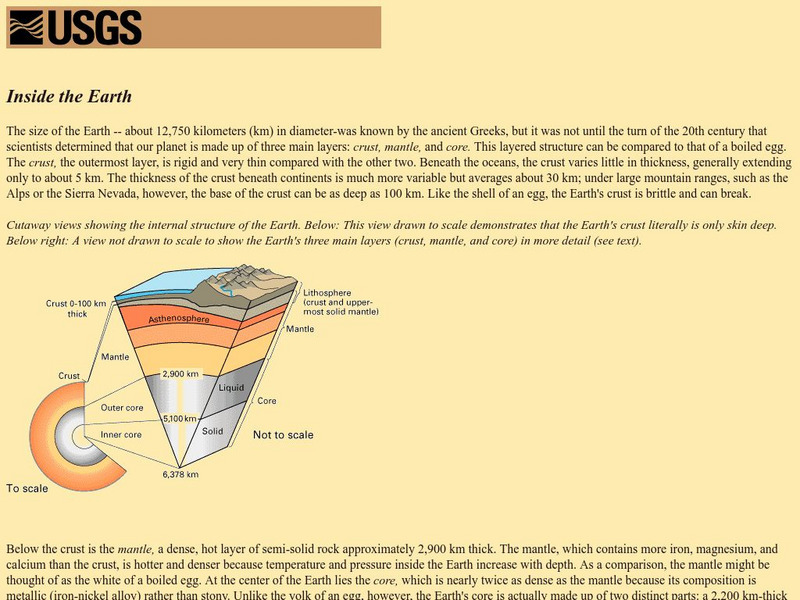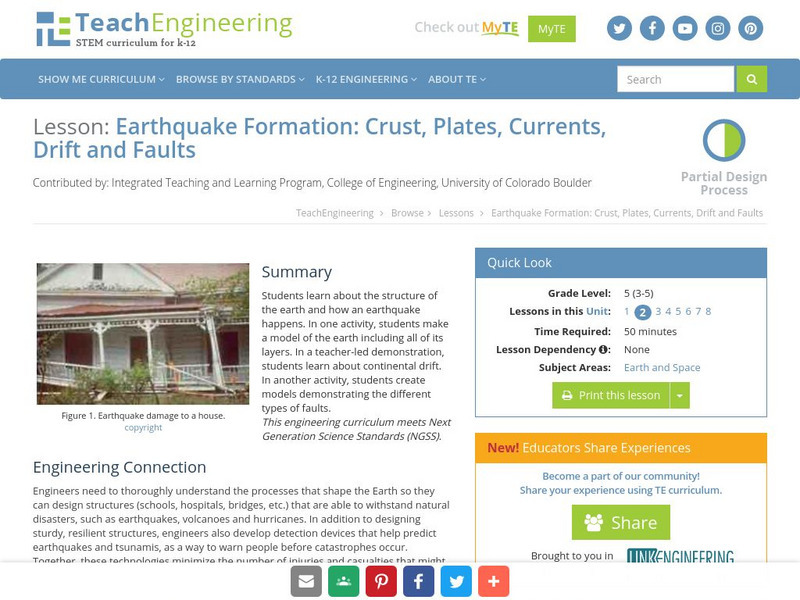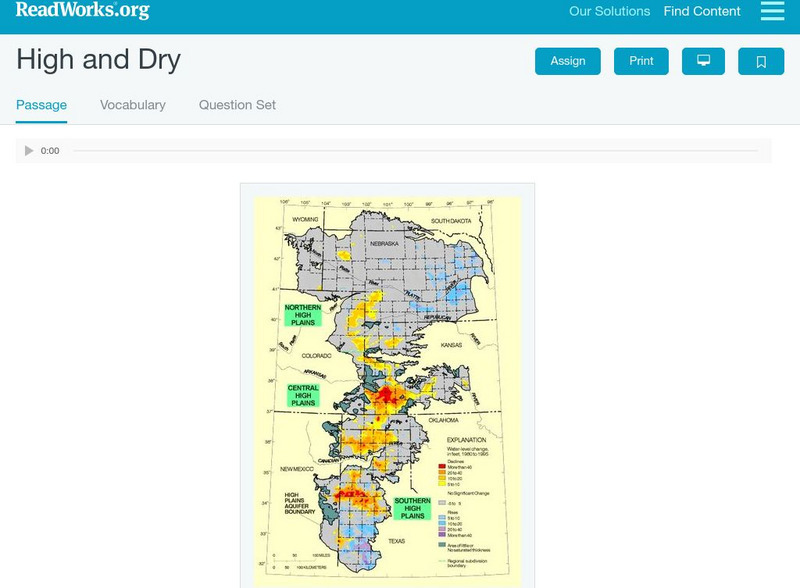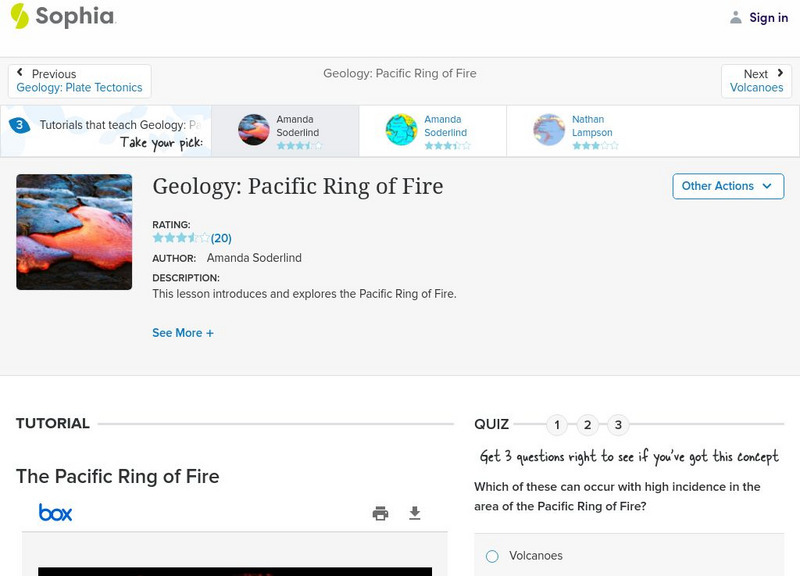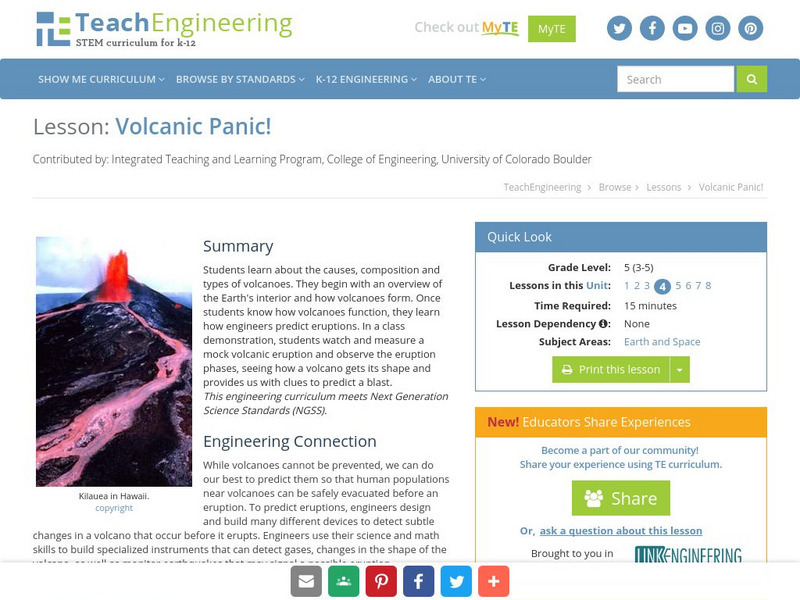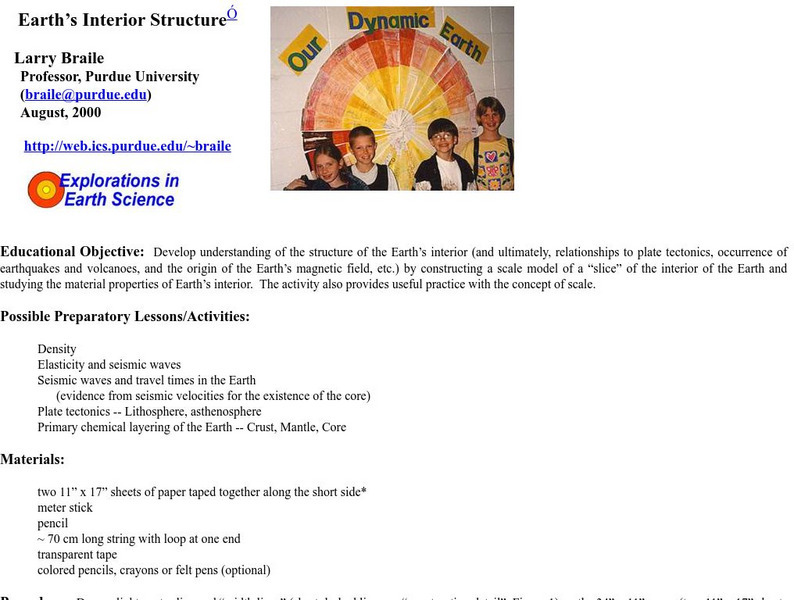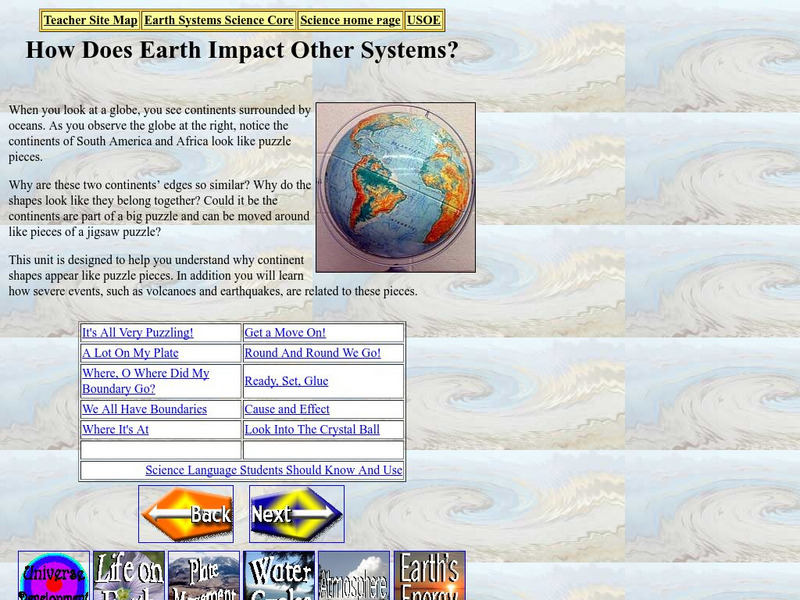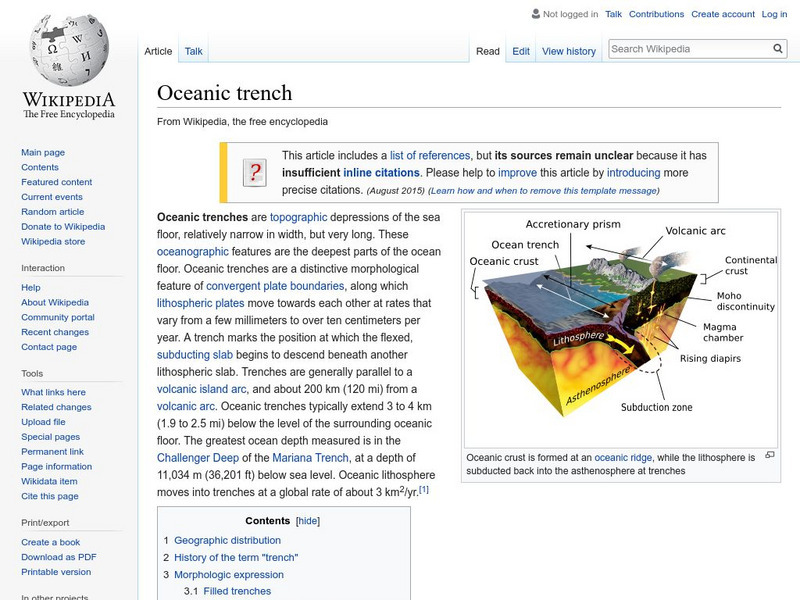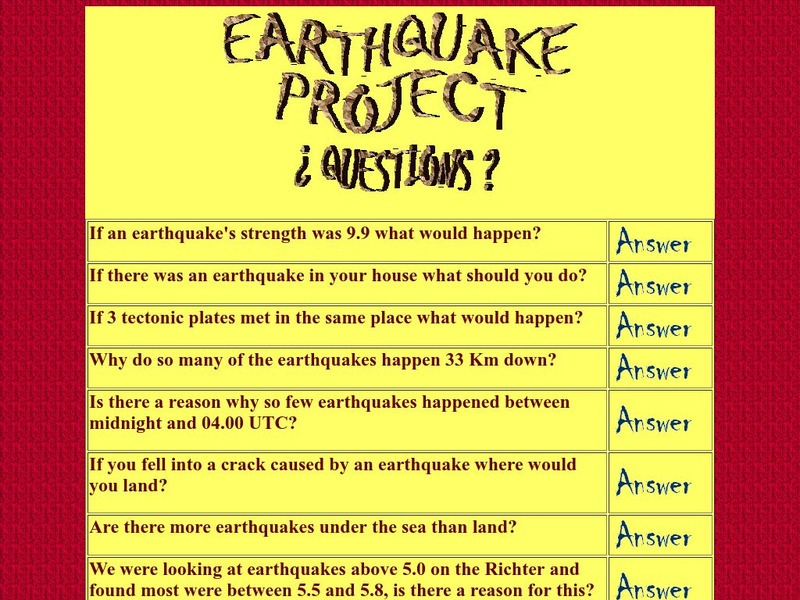Hi, what do you want to do?
PBS
Pbs: Earth Science Exploration
An earth science collection where learners can explore earthquakes, volcanoes, and more natural phenomena. The collection uses videos and interactive activities to investigate our dynamic planet and earth systems.
Other
Bscs: Content Background Earth's Changing Surface
This is written to support and further your content learning about the dynamic nature of Earth's surface. The goal is for you to develop a conceptual understanding of landforms so that you will be able to more effectively teach...
Scholastic
Scholastic: Disaster in the Pacific
Articles on the devastation in Japan due to the earthquake in March, 2011. Also find resources on tsunamis, tectonic plates, and earthquakes.
Annenberg Foundation
Annenberg Learner: Earth and Space Science: The Geologic Timeline
Take this online quiz and test your knowledge of geological history, and the formation of our atmosphere, water, crust, oxygen, tectonic plates, Moon, and the rest of the Earth.
Science Struck
Science Struck: Facts About the Cenozoic Era and Its Life Forms
Describes the different periods, epochs, and stages of the Cenozoic Era and the events that took place in them. Looks at geology and tectonic plate movements, climate, flora and fauna, and the emergence of mammals as the dominant life...
Other
K 3 Learning Pages: Tsunami Disaster
This site features several links to tsunami relief sites. Students and teachers can access information about the tsunami relief efforts through these resources.
Other
University of California: Ocean Drilling Program
Scientists probe the ocean floor off Costa Rica and find evidence that may tell us more about what goes on in ocean trenches.
US Geological Survey
Usgs: Inside the Earth
This is a website to learn not only about the inner and outer core, but also about the crust and the mantle of the interior of the earth.
TeachEngineering
Teach Engineering: Earthquake Formation
Learners learn about the structure of the earth and how an earthquake happens. In one activity, students make a model of the earth including all of its layers. In a teacher-led demonstration, learners learn about continental drift. In...
Read Works
Read Works: High and Dry
[Free Registration/Login Required] An informational text about the High Plains aquafer and problems created by the dwindling water supply. A question sheet is available to help students build skills in reading comprehension.
Sophia Learning
Sophia: Geology: Pacific Ring of Fire
A slide show presentation illustrating the characteristics of the Pacific Ring of Fire.
Annenberg Foundation
Annenberg Learner: Volcanoes
This interactive from Annenberg Learner asks the question of whether erumptions of volcanoes can be predicted. Review what you already know about volcanoes, and move on to forecasting potential. Several short video clips are included as...
TeachEngineering
Teach Engineering: Volcanic Panic!
Students learn about the causes, composition and types of volcanoes. They begin with an overview of the Earth's interior and how volcanoes form. Once students know about how a volcano functions, they learn how engineers predict...
Purdue University
Purdue University: Earth's Interior Structure
Purdue University provides a great lesson plan for learning about the Earth's interior structure. Focuses on the crust, mantle and core. Also includes examples and great charts that students will enjoy looking at.
PBS
Wnet: Thirteen: Savage Earth: Waves of Destruction, a Tsunami Animation
View a brief animation that explains the science behind a tsunami.
Utah State Office of Education
Utah State Office of Education: How Does Earth Impact Other Systems?
Have you ever noticed how some of the continents and land masses of Earth seem to fit together like pieces of a puzzle? This unit is designed to help you understand why continent shapes appear that way. In addition you will learn how...
Science Struck
Science Struck: How Was the Mid Atlantic Ridge Formed?
Learn what the Mid-Atlantic Ridge is, how it was formed in the Triassic Period, the volcanic activity that takes place there, and the benefits and negative impact of this activity.
NASA
Nasa Space Place: What Is an Earthquake?
Discover why earthquakes happen, how we measure them, and why they only happen on Earth.
Science Struck
Science Struck: Examples of Destructive Forces of Nature
Discusses the destructive forces unleashed by volcanic eruptions, and the movement of water, wind, ice, and tectonic plates.
Science Struck
Science Struck: Examples of Constructive Forces of Nature
Discusses the constructive forces resulting from volcanic eruptions and the movement of water, wind, ice, and tectonic plates.
Wikimedia
Wikipedia: Oceanic Trench
Wikipedia provides brief information on oceanic trenches, and has a hyperlinked list of major world trenches.
Other
Dromore National School: Earthquake Project Questions
Read the questions students most often ask about earthquakes and read the answers.
Treehut
Suzy's World: Earth
At this site from Suzy's World and Suzy Cato, you can find out what the earth is made of and try an experiment.
Other
Ceri: Earthquake Facts and Follies
A list of frequently asked questions about earthquakes. This is a good source for earthquake trivia and separating fact from fiction.
Other popular searches
- Plate Tectonics Activities
- Plate Tectonics Pangaea
- Plate Tectonic Demonstration
- Science Plate Tectonics
- Lessons on Plate Tectonics
- Theory of Plate Tectonics
- Plate Tectonics Lab Activity
- Modeling Plate Tectonics
- Evidence for Plate Tectonics
- Plate Tectonics Theory
- Plate Tectonics Word Search
- Tectonic Plate Boundaries









